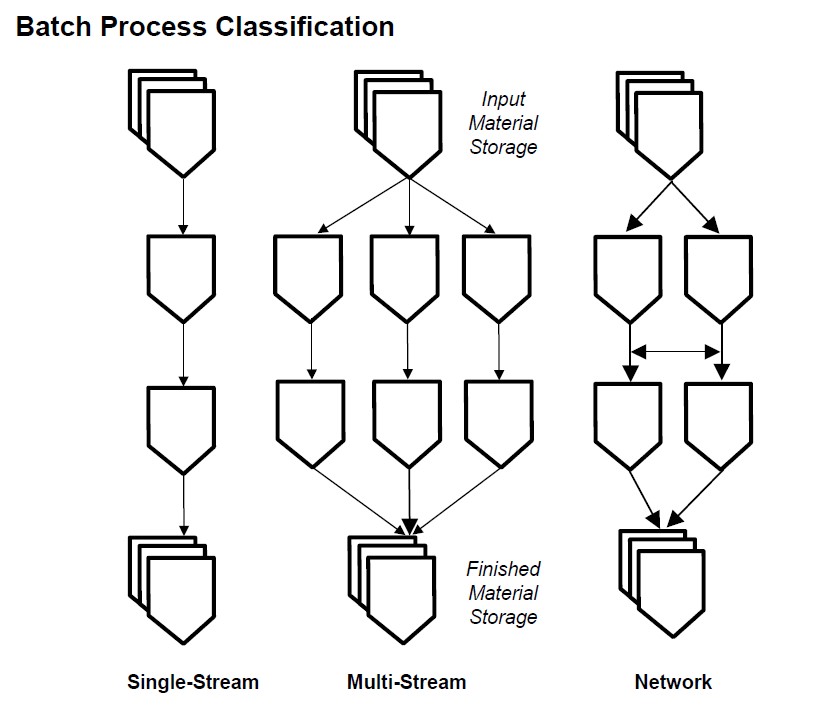Topic 1.1.3: Types of Process
- Continuous Processes: A process that creates a product by passing materials through different pieces of specialized equipment operating in a single, steady state performing one dedicated process function.
-
In a continuous process, a product is made by passing materials through different pieces of specialized equipment. Each of these pieces of equipment ideally operates in a single, steady state and performs one dedicated process function. The output from a continuous process appears in a continuous flow.
-
- Batch Processes: A process that manufactures a finite quantity of material by subjecting quantities of input materials to a sequential order of processing actions using one or more pieces of equipment.
-
The batch process is a process that manufactures a finite quantity of material by subjecting quantities of input materials to a sequential order of processing actions using one or more pieces of equipment. The product produced by a batch process is called a batch.
-
Batch processes are discontinuous processes. Ingredients are sequentially prepared, e.g., mixed, reacted, finished, and then packaged.
-
- Batch Process Classification
-
- By Product
- Single Product
- The batch process produces the same product every time.
- Multi-product
- The batch process produces different products utilizing either:
- Formula Variations
- Formula and Procedure Variations
- The batch process produces different products utilizing either:
- Single Product
- By Physical Structure
- Single Stream
- A single stream structure is a group of units through which a batch passes sequentially; multiple material inputs are commonly used; multiple finished materials may be produced.
- Multiple Stream
- The multiple stream structure consists of multiple single-stream processes in parallel with no product transfer between them. However, they typically share raw materials sources and product storage. Several batches may be in progress at the same time.
- Network
- The network structure has paths that may be fixed, and each batch will follow the same path, i.e., use the same units in the same sequence. The path may also be variable. When the path is variable, it may be determined at the beginning of the batch or it may be determined as the batch is being produced. The path could also be totally flexible, i.e., a batch could start at any unit and take multiple paths through the process.
- Many batches could be running at the same time and typically will share raw material sources and product storage.
- Single Stream
- By Process
- Process Validation
- Cleaning (CIP or SIP)
- Lab Testing
- By Product

Last modified: Thursday, 14 May 2020, 3:55 PM
